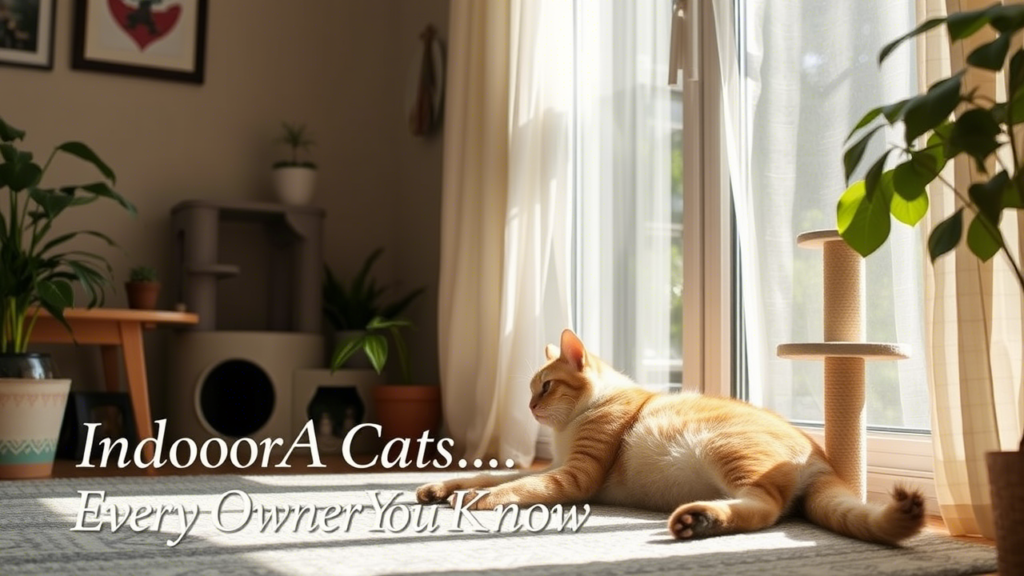5 Facts About Indoor Cats Every Owner Should Know
indoor cats ( breeds, lifespan, vs outdoor cats, for adoption, for sale, for rehoming near me, for rehoming near me for free, for rehoming scotland, for adoption bristol)
Indoor cats might seem easy to care for, but they have specific needs and behaviors that require careful attention to help them flourish. Providing the right environment, understanding their vocalizations, and meeting their instincts are crucial for their well-being. A thoughtful and informed cat owner can create a space that supports the cat’s natural tendencies, making them feel safe, engaged, and loved. By learning more about their needs, you’ll be better equipped to offer your indoor cat a fulfilling life, improving their health, happiness, and the bond you share.

1. Cats Need Vertical Space
Indoor cats do best when they have access to vertical space for climbing and perching, behaviors that are instinctual for them. Unlike other pets that primarily use horizontal space, cats feel most secure when they are elevated and can survey their surroundings. Offering options like cat trees, shelves, or window perches helps them exercise, stay mentally stimulated, and retreat to safe areas. Even in smaller homes, vertical spaces can provide your cat with the necessary engagement and activity to reduce stress and keep them happy.
Also Read:- Caring for Your Calico Cat: Tips, Tricks, and Tail-Wagging Advice
2. Sunlight Is Important for Well-being
Though cats don’t synthesize Vitamin D like humans, they still benefit greatly from the warmth and comfort of sunlight. A cozy bed or perch positioned near a window allows them to soak up the sun, which also stimulates their senses by letting them watch the outside world. Sunlight regulates their sleep patterns and boosts their mood, creating a sense of contentment. Ensuring your indoor cat has access to natural light is an easy yet impactful way to enhance their quality of life.
3. Interactive Play Is Key to Preventing Boredom
Interactive play is essential for indoor cats, as it helps mimic the hunting instincts they would use in the wild. Engaging with toys like feather wands, laser pointers, and puzzle feeders provides both physical and mental stimulation, preventing boredom. Play sessions lasting at least 15 minutes each day help manage weight, which is a common concern for indoor cats, and they also strengthen the bond between you and your pet. By rotating toys and observing what excites your cat, you can ensure they stay active, happy, and healthy while indoors.
4. Custom Diets Are Important
Indoor cats tend to be less active than outdoor cats, so their diet should be carefully controlled to prevent weight gain. A balanced diet with high-quality, protein-rich food and low carbs is ideal for supporting their energy needs. Portion control is essential, as many cats eat out of habit or boredom rather than hunger. Incorporating wet food into their meals can promote hydration, benefiting their urinary health. Regular check-ups with a veterinarian help ensure your cat’s nutritional requirements are met, keeping them healthy and satisfied.
5. Feline Body Language Is a Powerful Communication Tool
Understanding your cat’s body language is key to building a stronger relationship. Cats convey their emotions through movements of their tails, ears, eyes, and posture. A high, upright tail often signals confidence or friendliness, while a tucked tail might indicate fear. Forward ears show curiosity, while flattened ears suggest irritation or aggression. Slow blinking is a sign of trust, and an arched back may signal defensiveness. Learning to recognize these signals will help you respond appropriately to your cat’s needs, creating a bond based on mutual understanding and trust.
FAQ Section: Indoor Cats
Q: How do I keep my indoor cat entertained?
A: Keeping your indoor cat entertained involves providing toys that mimic hunting behavior, such as feather wands, laser pointers, or puzzle feeders. Also, ensure your cat has access to vertical spaces like cat trees or shelves to climb and explore. Daily interactive play for at least 15 minutes is essential to prevent boredom.
Q: What’s the best diet for indoor cats?
A: Indoor cats generally require a calorie-controlled, high-protein diet to prevent weight gain, as they tend to be less active. Choose a high-quality cat food, and be mindful of portion sizes. Incorporating wet food can help with hydration and urinary health. Always consult your vet for personalized dietary recommendations.
Q: Why is sunlight important for my indoor cat?
A: Sunlight provides warmth and comfort for indoor cats, enhancing their mood and overall well-being. It also helps regulate their sleep-wake cycle and offers mental stimulation by allowing them to observe outdoor activity. Ensure your cat has a cozy perch or bed by a window to enjoy the benefits of sunlight.
Q: How can I understand my cat’s emotions better?
A: Cats communicate their emotions through body language. A high tail indicates confidence, while a tucked tail can suggest fear. Ears held forward show curiosity, and flattened ears may signal irritation. Slow blinking is a sign of trust, and an arched back typically means defensiveness. Learning to read these signals will help you respond to your cat’s needs and strengthen your bond.
